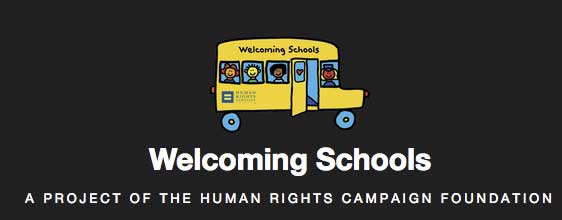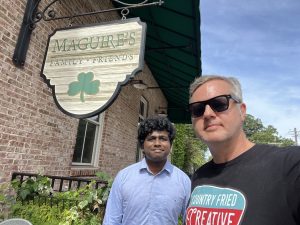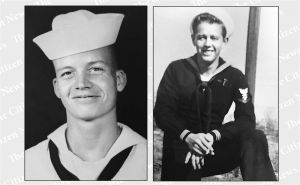Fayette County’s school nurses assigned to the system’s 24 schools recently received a training session about how to talk with students beginning in first grade about gender issues.
A recent Welcoming Schools training session was designed to assist the nurses in better understanding the current, and numerous, distinctions related to gender, according to Superintendent Dr. Joseph Barrow.
“Recently our school nurses received an introduction to ‘Understanding Gender and Supporting Transgender Students.’ A representative from the Georgia Safe Schools Coalition, who is also a Welcoming Schools facilitator, conducted the presentation,” said Barrow. “The training was provided at the request of the nurses so they could better understand how to help and how to talk to families and children who are addressing these issues.”

Among the “gender definitions for elementary school students” in the training handout are the following:
“Gender identity: How you feel. Who you know yourself to be. He, she, neither or both. This can be different from the anatomy that you were born with (sex assigned at birth).”
“Sex assigned at birth: When a baby is born, a doctor or midwife looks at their body/anatomy and says they are a boy or a girl. Babies can’t talk yet, so they can’t tell us how they feel. When they start to talk, they may say they feel like a girl or a boy or neither.”
“Sexual orientation: Who you love.”
More material may be found online at www.welcomingschools.org, which says it is a project of the Human Rights Campaign Foundation, funded in part by Wells Fargo Bank. “Welcoming Schools is the nation’s premier professional development program dedicated to creating respectful and supportive elementary schools by embracing family diversity, creating LGBTQ- and gender-inclusive schools, preventing bias-based bullying, and supporting transgender and non-binary students,” the organization’s website says. LGBTQ stands for “lesbian, gay, bisexual, transgender and queer.”
The Welcoming Schools material includes — besides “gender definitions for elementary school students” — trainers to present professional development modules, films, books and lesson plans, which the website says “are aligned with the Common Core Standards and are easily integrated into Social Emotional Learning (SEL) and anti-bullying programs.”
Barrow reiterated that only nurses received the training. He added that transgender training is not being added to the curriculum.
“This was adult training only. The school system does not have an approved transgender curriculum at any grade level. We believe parents and/or guardians are their child’s first and most important teacher and will address these issue accordingly,” Barrow said.
Welcoming Schools promotes its impetus as “a comprehensive approach to creating respectful and supportive elementary schools with resources and professional development to embrace family diversity, create LGBTQ-inclusive schools, prevent bias-bullying and gender stereotyping and support transgender and gender-expansive students.”
Among the handouts to nurses was four pages of gender definitions for terms such as gender binary, heteronormative, pansexual and intersex.
“Our school system serves a diverse population of students and one of our district’s goals is to provide professional learning opportunities for our faculty and staff that will help them understand and identify issues facing our diverse student population,” Barrow said. “We want our employees to be equipped to provide the appropriate support for the physical, mental, and the overall educational well being of all of our children.”
From the website: LGBTQ definitions for children
When children ask questions about LGBTQ words, it is often best to offer simple and direct answers. Sometimes, children aren’t quite sure what they are asking, or they are just repeating something they heard on the playground, on television or at home—therefore, it is helpful to ask clarifying questions. If a student is asking because another student used the word as a slur, a teacher will also need to address the situation as bullying behavior.
Here are a few items to keep in mind when defining terms for children:
Use examples to help children understand definitions.
Ask questions about LGBTQ words to help students to understand differences and treat others with respect.
If a student uses an LGBTQ term in a derogatory way, ask them if they know what it means. If they don’t, give a short definition and explain how using an identity as a slur is mean and emphasize that the word is not a bad word.
The following list can serve as a starting place for educators to respond to questions about LGBTQ words. These suggested definitions can help to ensure that you feel confident in your own knowledge and ability to communicate these ideas to students. Use your own expertise to modify definitions based upon the age of your students.
Ally: A student who speaks up in the moment for someone else, comforts someone privately, or who gets help from a caring adult.
Bisexual: People can love other people of both genders. People get to love who they love.
Cisgender: A person whose gender identity is the same as their sex assigned at birth (anatomy/biology).
Gay: Two people of the same gender who love each other. Two men or two women.
Gender: It’s how you feel. She, he, neither or both.
Gender Binary: The idea that there are two distinct and opposite genders — male and female/boy and girl. This idea is limiting and doesn’t allow for the many ways that children and adults express themselves.
Gender Expansive: This means that here at our school children get to “like what they like.” Toys are toys, hair is hair, clothes are clothes. Children can express themselves fully – to be who they are without being teased or bullied.
Gender Expression: One of the many forms of expression where we share who we are with items such as our clothes and hair.
Gender Identity: How you feel — male, female, neither or both. This can be different from the anatomy that you were born with (sex assigned at birth).
Genderqueer: A person whose gender identity is neither, both or a combination of male and female.
Heterosexual: Two people of different genders who love each other. A man and a woman.
Intersex: Just as our hair, eyes and noses are different. There is variation in all of our anatomy.
Lesbian: Two people of the same gender who love each other — two women.
LGBTQ: Acronym for Lesbian, Gay, Bisexual, Transgender, Queer and/or Questioning.
Non-binary: A person whose gender is both, neither, or a unique mixture of male and female that may change daily or over time based on how the person feels.
Queer: This word can mean different or peculiar. It can also mean someone who is gay. When used in a mean way, it is a word that hurts. Many people now use it in a positive way to identify with and celebrate people of all gender identities and all the ways people choose to love each other.
Sexual Orientation: Who you love.
Transgender or Trans: When your gender identity (how you feel) is different than how your body is (your anatomy). When a person with a boy body feels like a girl inside their heart and brain. Or, when a person with a girl body feels like a boy inside their heart and brain.
(Source — http://www.welcomingschools.org/resources/definitions/youth-definitions/)
Lesson plans from the website:
Easy to use lesson plans. Help students understand ways gender stereotyping impacts all children. There are many ways to be a boy, girl, both or neither. Help all of your students understand transgender and non-binary children.
All HRC Welcoming Schools lessons are aligned with the Common Core Standards.
“We Are All Human Beings”
A simple activity for students to explore gender stereotypes. [grades K – 2]
I Am Jazz: Understanding Transgender Children
This picture book, “I Am Jazz,” based on the life of Jazz Jennings, can help start a conversation with students on what it means to be transgender. [grades K – 5]
Using children’s books to look at gender stereotyping
Find a fun way to talk about gender stereotypes and discrimination with activities paired with children’s books. [grades 1 – 3]
Biographies: Courageous, diverse role models for students
Reach beyond the usual biographies. Find strong women, creative men, and other successful people of all genders to inspire your students. [grades K – 6]
Be who you are: I Am Me poems
Allow students to express who they are through poetry after reading Looking Like Me by Walter Dean Myers. [grades 1 – 5]
Media Sleuths: Examining gender roles in advertising
With a quick look at magazines, catalogs or TV, students can see many gender stereotypes. Use the log sheet to record findings, tally results and spark discussions. [grades 3 – 6]
Composing the future in story or song: Shifting gender roles
With the music video, “I Am Me” by Willow Smith or fractured fairy tales inspire your students to write their own stories and songs. [grades 4 – 6]
Discussing gender stereotyping with children’s books
Through children’s books, generate discussions with older elementary students on gender stereotypes. [grades 3 – 5]
Using literature circles to look at gender expectations
Find ideas for great books that can get your students discussing gender roles and stereotypes. [grades 4 – 6]
Sample lesson from the website:
From the website lesson plan: We are all human beings
SUGGESTED GRADE LEVEL: K–2
LENGTH OF TIME: Activity 1 is a 40-minute session (and can be done on its own). Activity 2 is a 20- to 30-minute session.
GOAL
- Students will develop appreciation for human diversity.
OBJECTIVES
- Students will be able to name many things all human beings have in common.
- Students will be able to define and identify stereotypes.
ACADEMIC STANDARDS
- CCSS SL 1.1 Participate in collaborative conversations with diverse partners about grade 2 topics and texts with peers and adults in small and larger groups. Also SL K.1, 2.1.
- CCSS SL 1.4 Describe people, places, things, and events with relevant details, expressing ideas and feelings clearly. Also SL K.4, 2.4.
- Social Studies Strand 4: Individual Development and Identity – Exploration, identification, and analysis of how individuals and groups are alike and how they are unique.
EDUCATORS’ NOTES
This gender lesson focuses on the commonalities between all human beings (Note: “people” can be used instead of “human beings” if that language will make the lesson more effective for your class) focusing on children in the lower elementary grades. It is important to identify all the things the children have in common rather than the things that separate them. The media and toy manufacturers spend a lot of resources and time identifying gender differences.
This lesson encourages students to think about what is true about all human beings. The students will look carefully at the questions, “What is a human being?” and “What is true about all human beings? What is it that links us to one another, no matter who we are, where we live or what sex we are?” The list that your class generates may include:
We all have …
Creativity, perspective, feelings, bodies, dreams, voices, fears, tears, bravery, languages, smarts, beating hearts, bones, allies, blood, passions, hopes, likes and dislikes.
We all make mistakes. We all need love. We all laugh. We all love. We are all unique.











Leave a Comment
You must be logged in to post a comment.